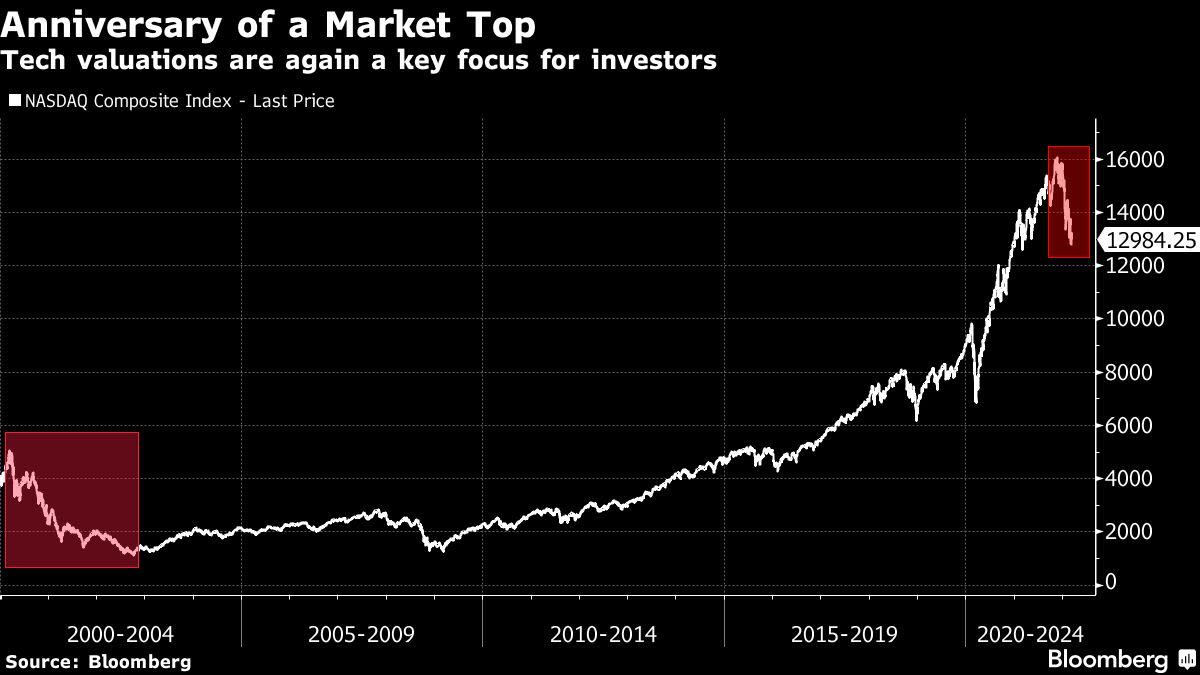
(Bloomberg) — The recent selloff in major U.S. technology and internet stocks comes at an inauspicious time as March 10 marks the anniversary of the peak of the dot-com era, after which some of the market’s then-biggest names began a collapse they would take years to recover from.
The Nasdaq Composite Index hit an intraday peak of 5,132.52 on this date in 2000, before going on to lose 78% of its value and finally bottoming in October 2002. It wouldn’t recover its former peaks until mid-2015.
The recent falls come after technology and internet names had led the index higher for years. The scale of that rally means that tech valuations are once again a central focus for investors. Some have even invoked the dot-com era as a parallel, though for Daniel Morgan, a senior portfolio manager at Synovus Trust, the current market isn’t anything close to the Nasdaq of 2000.
While there are near-term headwinds, “the Tech sector of today appears to be on a much stronger foundation than back in the late 1990’s as many Dot.Com companies had little profits,” he wrote in a note dated March 4. Major names are “flushed with cash on their balance sheets that could be used to weather any storm or make acquisitions to boost future growth.”
The Nasdaq fell 1% on Thursday, and is about 18% off its November peak as high inflation, expectations the Federal Reserve will begin raising rates, and Russia’s invasion of Ukraine all spur selling. Among notable names, Apple fell 2.7% on Thursday, Microsoft dropped 0.8%, Meta Platforms lost 2.1% and Alphabet declined 0.3%. Amazon.com bucked the trend, rising 6.2% on a stock split and buyback program.
Even with the recent weakness, the Nasdaq is trading near 13,000, meaning that an investor who bought at the 2000 peak and held would have more than doubled their money over the past 22 years. However, the overall return of such a trade isn’t especially impressive, amounting to about 5.4% a year. To compare, the S&P 500 Index returned 7.2% annually over the same period.
©2022 Bloomberg L.P.